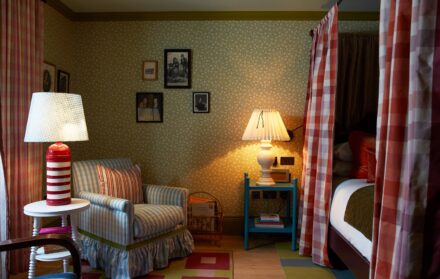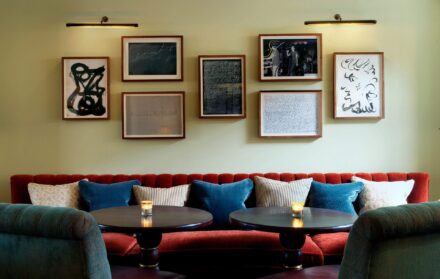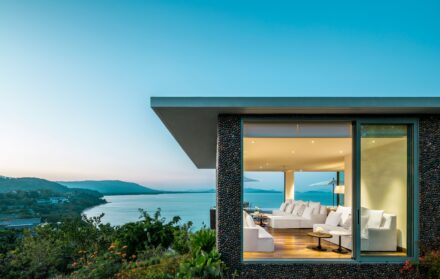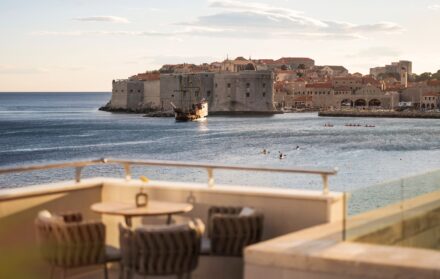
Inside Perrier-Jouët’s Champagne Cellars
“Too much of anything is bad, but too much champagne is just right" - Mark Twain
Trust the English to have a hand in alcohol innovation. Today our binge drinking reputation precedes us, but it seems our forefathers were equally hard up on the booze. When Perrier-Jouët began bottling its famed fizz, England was the first port of call for exports. Thanks to a combination of thin glassware and a pressure that is six times that of a car tyre, countless bottles of bubbly would explode en route across the Channel. Annoyed that their precious commodities were erupting mid-transit, the English requested Perrier-Jouët create a stronger, thicker bottle to house their favoured fizz.
To be told this in the cellars of Perriet-Jouët’s HQ is somewhat surreal and, admittedly, a little unsettling. I am underground, surrounded by an alcohol that apparently has the ability to self-destruct. No sudden movements, then.
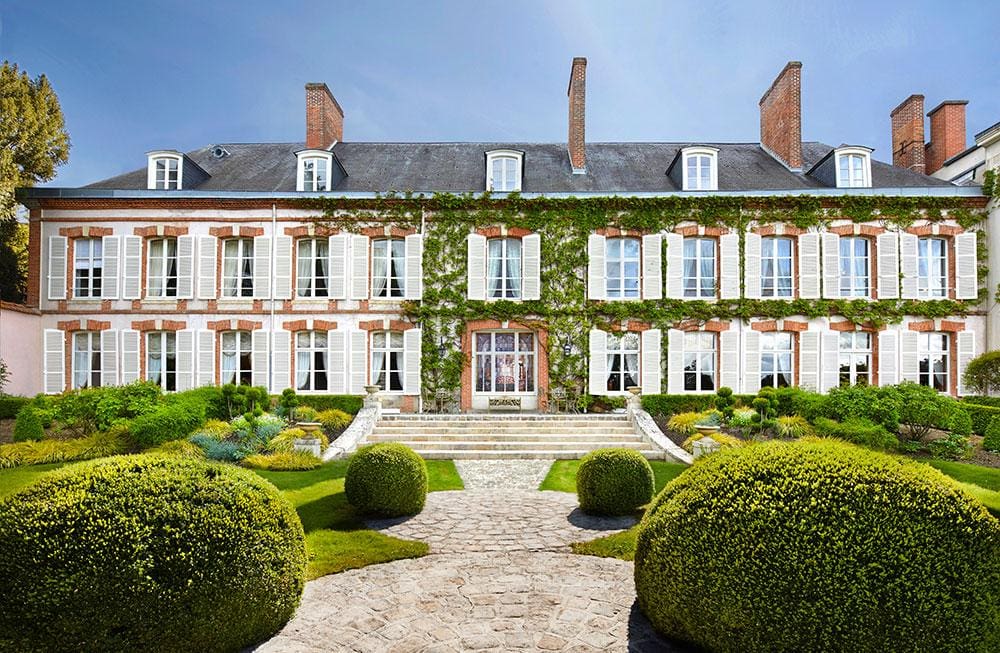
I’m on a tour of Maison Belle Epoque, the house of the Perrier family and now a museum dedicated to their love of fizz and art nouveau. Below are the cavernous wine cellars where bottles of the brand’s finest fizz are kept to age – two bottles from 1825 are said to be the oldest vintages still available today.
Founded in 1811 in Epernay by husband-and-wife team Pierre-Nicolas Perrier and Rose-Adelaide Jouët, the house was born out of his passion for botany and her expertise in the merchant trade. Having started with just 10 hectares of vineyard, the couple’s son, Charles Perrier, expanded the estate, multiplying its surface area by six. By this point, in the mid-1800s, the top dogs in Europe where toasting to success with a glass of Perrier-Jouët: Napoleon III, Charles 15th of Sweden and Queen Victoria were all fans.

When Charles’s nephew, Henri Gallice, took over in 1872, he set on a path to improve the champagne’s quality, refusing to bottle fizz from bad harvests and blending vintages that have since become legendary. He also enlisted the artistic prowess of Émile Gallé, whose illustrations of ivory Japanese anemones still adorn the brand’s bottles today.
Galle’s Art Nouveau style influenced the house in more ways than one. Inspired by his design, Henri’s nephew Michel Budin, sales director Pierre Ernst and cellar master Andre Bavaret travelled the world to cultivate a collection of almost 200 objects created by the art movement’s greatest designers, with which they furnished Maison Belle Epoque. Today these pieces can still be admired; a Louis Majorelle bench, a Jacques Gruber dresser and glasswork by Lalique, Daum and Galle all take pride of place in the house.
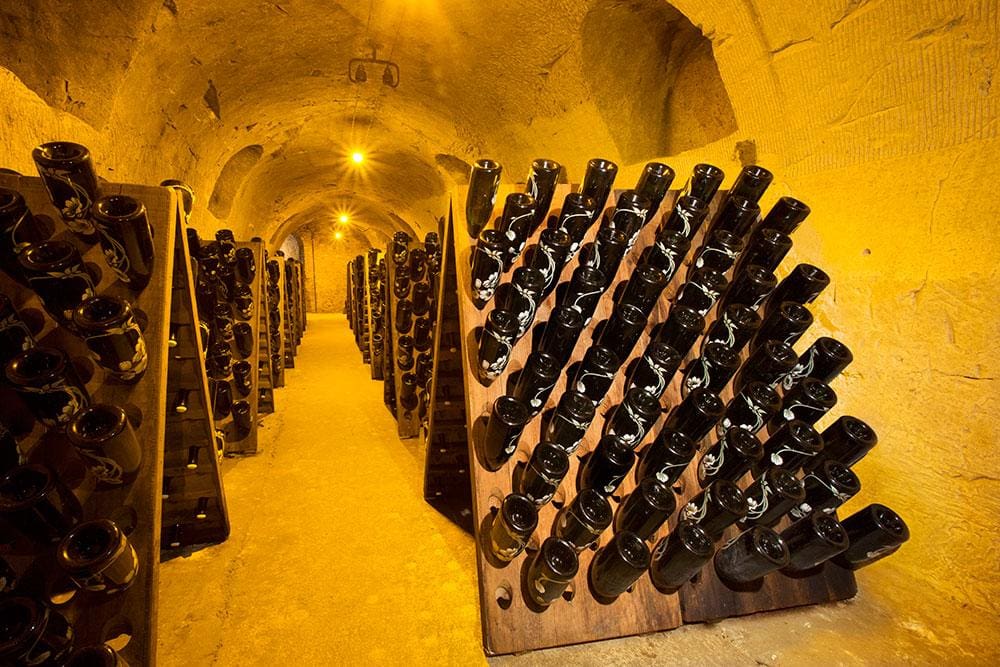
Beneath the parquet floorboards lies the warren that houses Perrier Jouët’s stock; dusty magnums in towering pyramids line the walls of the low-lit cave, with each bottle laid horizontally to allow the yeast sediment to rest. When I visit, it’s cold despite the still warm September heat outside; temperatures are a constant 11 degrees thanks to the natural chalk chambers.
In between the tunnels of bottles are art installations commissioned and inspired by the House. The first, Lost Time by Glithero, is a series of beads draped in cobweb-like looms from the ceiling; they hang over a shallow base of water and the overall effect is mesmerising. It is Glithero’s take, I’m told, on champagne bubbles.

Back in the house, Japanese artist Ritsue Mishima has created her own homage to fizz, with a Murano glass mobile that hangs from the bar’s ceiling and clinks in the wind.
The sound of a bottle popping adds a melodic full stop to the tour. Flutes of the brand’s signature Belle Epoque Blanc De Blancs 2004 are passed out, a crisp floral blend made entirely from chardonnay grapes. It is said to pair well with dishes of caviar, lobster or scallops – but I find it is best drunk in Maison Belle Epoque’s garden, with a view of a champagne dynasty worth raising a glass to.
Where To Stay
A 90-minute car journey or a 40 minute train ride from Champagne, gay Paree is worthy of a pit-stop. Moments from Place de la Concorde, Sofitel Paris Le Faubourg is ideally located to scour the sites of the French capital, and with the high security US Embassy as a neighbour, it is equally well-suited for a spot of peace-and-quiet too.

What was once a pair of 18th-century townhouses and the former home of the Queen of Naples has been given a zany update by Didier Gomez, whose stylish CV includes the likes of Ferragamo, De Beers and Celine. The space translates its creator’s fashionable vision through plush duck egg sofas, gilded cornices and Baobab candles the size of buckets.
Upstairs, Gomez’s best display of classicism-meets-modernism is found in the bedrooms. Walk-in wardrobes, Hermès toiletries and photographs by the likes of Cecil Beaton and Cathleen Naundorf make further nods to the sartorial brigade – it’s a Paris Fashion Week favourite for a reason – while colossal marble bath tubs and ivory Louis XV-style armchairs remember traditional design.

In the on-site restaurant, Blossom, monochrome checkerboard tiles are offset with saffron yellow chairs and a ceiling of the same shade. Here, head chef Alexandre Auger specialises in home-grown produce picked from a typical French garden; think hearty homemade broths, fresh fish and rainbow salads. If you visit during September and October, be sure to partake in the Sofitel Wine Days event, an annual festival that takes place across the group’s portfolios of hotels, where themed menus and tasting events are hosted in tandem with the French grape harvest.

Outside, a bijou terrace surrounded by the hotel’s rooms offers a private spot for sundowners, or to dine if the weather permits. Enclosed in the hotel’s courtyard, the thrum of the French capital is dimmed and on a balmy night it’s easy to forget you’re in one of Europe’s busiest cities. One glance through the veranda doors, however, will serve as the ultimate memory aid: only in Paris could somewhere be this chic.




